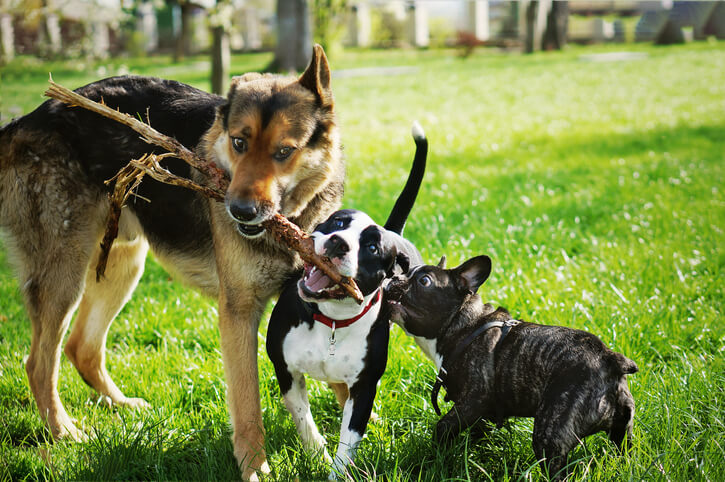Whether you’re moving in with a significant other or a new roommate, things can get a little bit tricky if you both have pets. Even if you’ve had the opportunity to introduce your pets to each other before the big move, pets can be territorial with their space, toys, and even you. To help ease the transition, UF Mover Guys gives you some tried-and-true tips for introducing your furry companions to their new friends.
To help the rest of your move go smoothly, schedule moving services with our professional moving company in Gainesville, FL.
First Impressions
If there hasn’t been time to get your pets acquainted before the big move, make sure to set aside time in a neutral area. For most dogs, this can be an area outside of the home, such as a dog park. For cats and dogs who aren’t trained enough for outdoor activities, find a place indoors.
If you’re moving into a completely new home, this should be easy to accomplish. However, if someone is moving into your space or vice versa, it can be challenging to find a spot that your pet hasn’t already established as their own. If so, the first meeting might need to be in a small, controlled area, such as a bathroom, and will most likely be brief.
You may even need to isolate both pets from each other and have them gradually become aware of one another through increasing proximity. While this isn’t ideal, it can help maintain safety while the two new pets are acclimating to each other’s presence.
Know The Signs
You’ve probably been with your pet long enough to know the signs they exhibit to tell you how they’re feeling. Reading your fur baby’s body language can go a long way toward ensuring that the transition to their new life goes smoothly.
For dogs, be aware of their ear and tail placement. If their ears are pinned back against their head, and their tails are down or curled between their legs, they’re probably feeling anxious about the new situation. Even if they’re not displaying anxious behavior, keep an eye out for territorial behavior when they may be too aggressive or growling at the other animal.
Similarly, if your feline friend is being extra stand-offish or trying to escape the situation, don’t push the meeting. You can always take a break and come back to introduce them to each other another day when they are more relaxed.
Exercise Dogs Together
When your dog was a puppy, you probably exercised them to curb unwanted behavior, such as chewing on furniture. The same principle can be applied to getting them used to a new situation. Exercising dogs together in a neutral environment can reduce stress, distract them from the unfamiliar, and tire them out, so they’re less likely to be fearful or aggressive.
Dogs are pack animals, so doing activities together strengthens their bond. Try taking them for a walk together at a new park. While walking, you don’t need to prioritize having them side by side, just near each other. Be sure to keep them leashed at the park so that you can maintain control of the situation. Furnishing plenty of treats and praise is also helpful because it creates a connection between being around this new dog and good things.
Take It Slowly
Animals are subject to their own thoughts and feelings about circumstances. It’s important to acknowledge and respect that whenever you’re introducing them to new experiences. While the new fur pals may almost instantly take to one another, it could take weeks or even months for harmony to build between them.
Both owners need to be patient with their pets. Sometimes, we take for granted that animals don’t speak our language and have no idea what’s happening or why. They may interpret the addition of a new pet in the household as a threat to their position. Take it one day at a time, and be sure to give both pets plenty of love and attention.
Also, be sure to provide each pet with a safe area where they can retreat to if they’re feeling overwhelmed. This place should be a separate room with comforts that they are familiar with, such as their crate, bed, food and water bowls, and toys. They may not hit it off as fast as you and your roommate did, but with patience and love, they’ll eventually come around.
